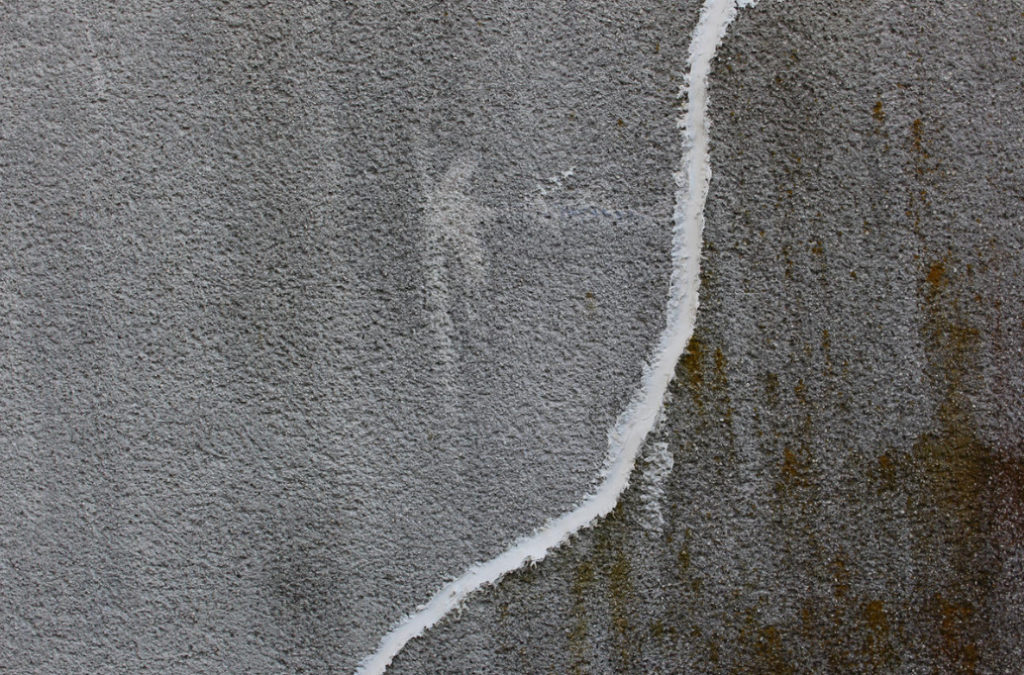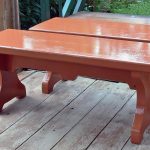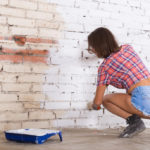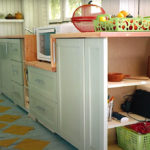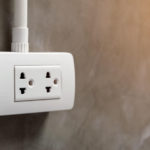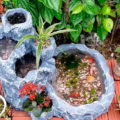Like other building materials, concrete is prone to crumbling and discoloration, which is caused by dampness, as well as related defects – cracking and peeling. Repairs are usually similar in many ways to working with brickwork and cement plaster, although there are also some features that you should be aware of. If the damage is too extensive, the concrete coating will have to be replaced before finishing work begins.
Concrete sealing
Fresh concrete has a high alkali content — fading (efflorescence) may appear on its surface. Use only water-based paint until the concrete is completely dry.
The treatment of fading is carried out in the same way as for brickwork. The outer side of a porous concrete wall should be treated with a waterproof transparent sealant (primer).
Concrete cleaning
You can also clean concrete from dirt with water (as described for brickwork), but if there are oil stains on the concrete surface, you will have to use a special tool to remove oils and fats. Apply the solution liberally to the surface with a brush, then clean it with a stiff brush and rinse everything with clean water. It is recommended to wear protective glasses at the same time.
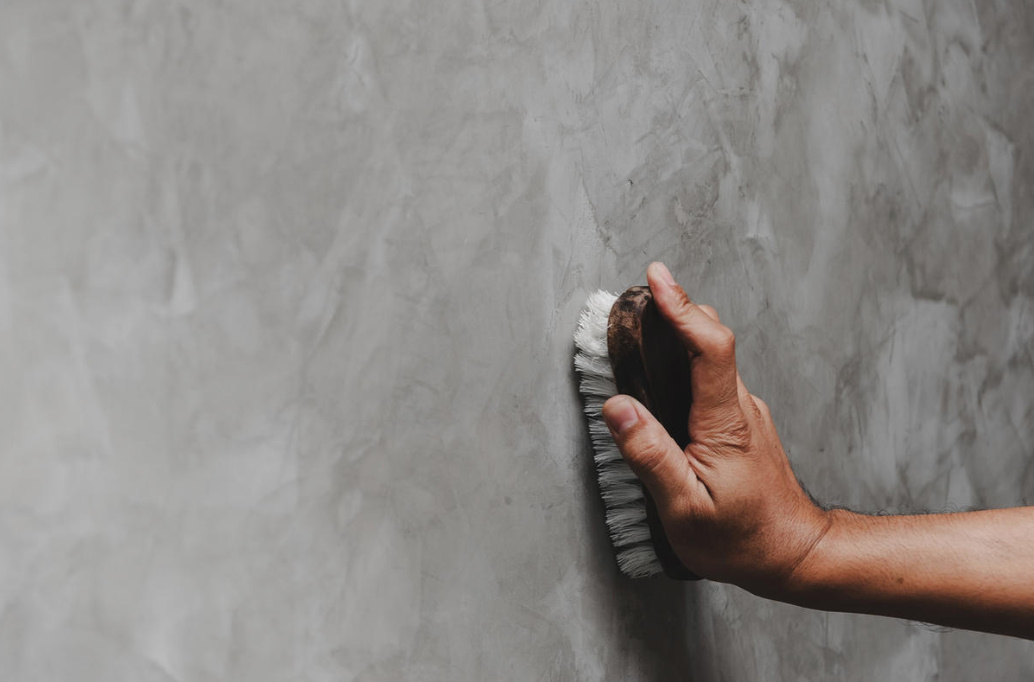
When working indoors, open all windows and doors. Fresh oil splashes should be immediately covered with dry sand or sawdust, preventing them from turning into long-lasting stains.
Sealing cracks and holes
- Clean and sweep out all the splinters and dust from the cracks and holes in the concrete. If the crack width is less than 6 mm, slightly widen it with a locksmith chisel so that it can be filled with putty.
- Cut the edges of the crack inwards, making a bevel to improve the adhesion of the putty with concrete.
- When sealing a hole in concrete, add a gravel-type aggregate to the cement-sand mixture.
- To make fresh concrete grapple with shallow depressions, prime them with a mixture of 3 parts of glue and 1 part of water.
- When the primed surface becomes sticky, apply the solution to the recess with a trowel and smooth it out.
Cement putty for outdoor work
As an alternative to preparing your own cement-sand mortar, you can buy a special cement-based putty for outdoor work. After mixing with water, the composition remains functional for 10-20 minutes. Just before hardening, level the surface of the putty.
Repair of crumbling concrete
When concrete cracks or crumbles due to exposure to atmospheric conditions, this process accelerates as the steel reinforcement is exposed and corroded.
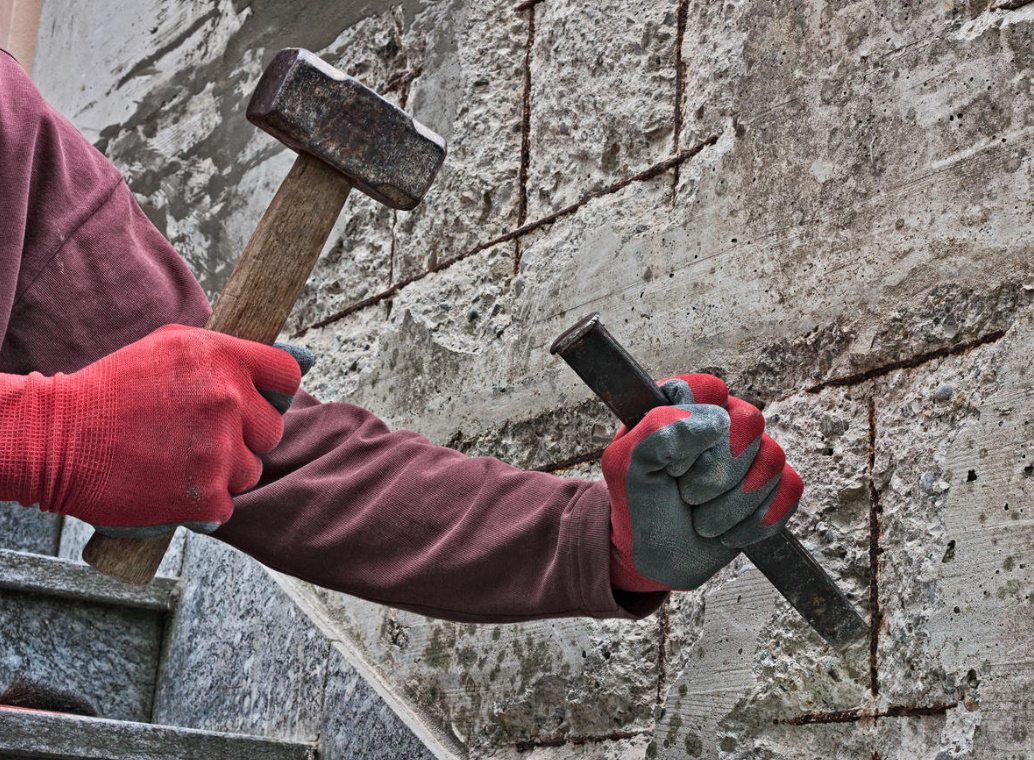
Cover the metal with an anticorrosive primer before repairing the concrete with a sand-cement mortar with a filler of the appropriate gravel/crushed stone.
Priming of dusty concrete
When laying concrete, it is rubbed (smoothed) to give the surface smoothness. If you overdo it, the cement of the mortar will rise to the surface, and when the concrete dries, this thin layer will begin to collapse, forming dust. It is usually recommended (although this is not always applicable) to prime the concrete floor before finishing. Cover the dusty concrete wall with a stabilizing primer.
Leveling of concrete floors
Before laying any floor covering, uneven or potholed floor must be leveled. You can easily do it yourself with the help of a special self-leveling mixture.
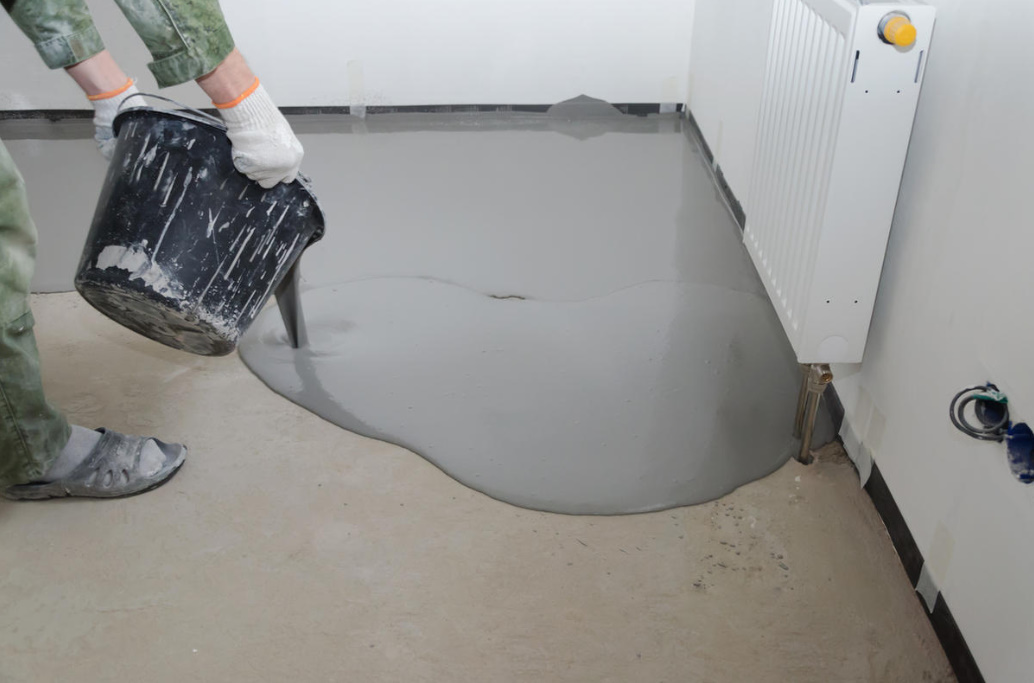
Important: Ensure that the surface is dry before starting work.
Dampness test
Glue a sheet of plastic wrap to the floor with adhesive tape. After one or two days, check if there are traces of moisture under the film. If yes, then apply three layers of moisture-repellent polyurethane sealant (primer) to the floor. The interval between applying layers should not exceed 4 hours. The floor should be as dry as possible to have sufficient porosity to absorb the first layer.
If necessary, use a hot air dryer/fan heater for drying.
Before pouring the self-leveling mixture, lightly sprinkle the top layer of the sealant with dry sand while it is still not dry. Allow three days for solidification, then sweep away the remaining sand from the sealant.
Application of self-leveling mixture
The self-leveling mixture is sold as a powder that is mixed with water. After ensuring the cleanliness and dryness of the floor (see above), pour part of the solution into the corner farthest from the door.
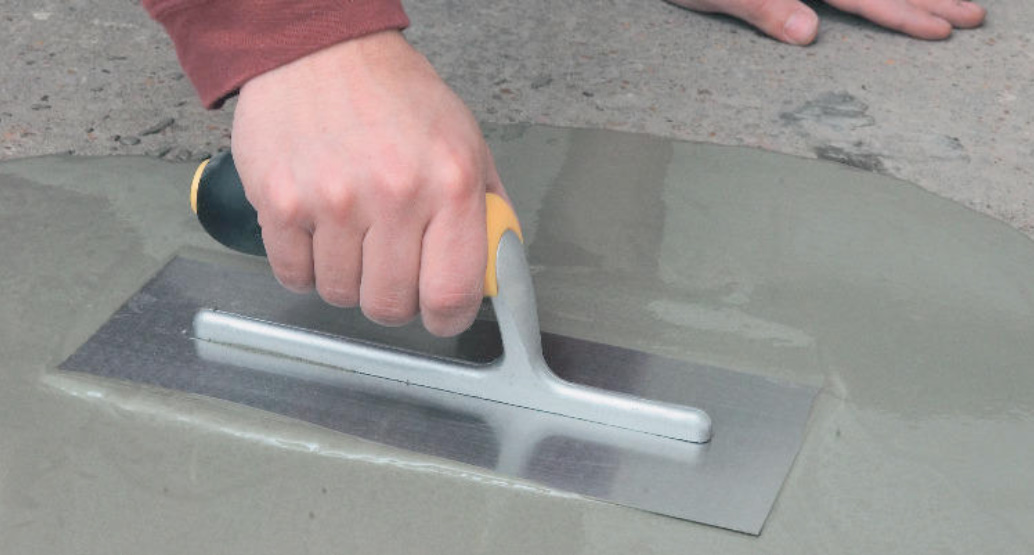
With a trowel, distribute the mixture so that the thickness of its layer is about 3 mm, after which it will level its surface itself. Continue working until you cover the entire floor. After about an hour, you can already walk on it, but it is better to leave the mixture to harden for a few days and only then lay a permanent coating on the floor.
